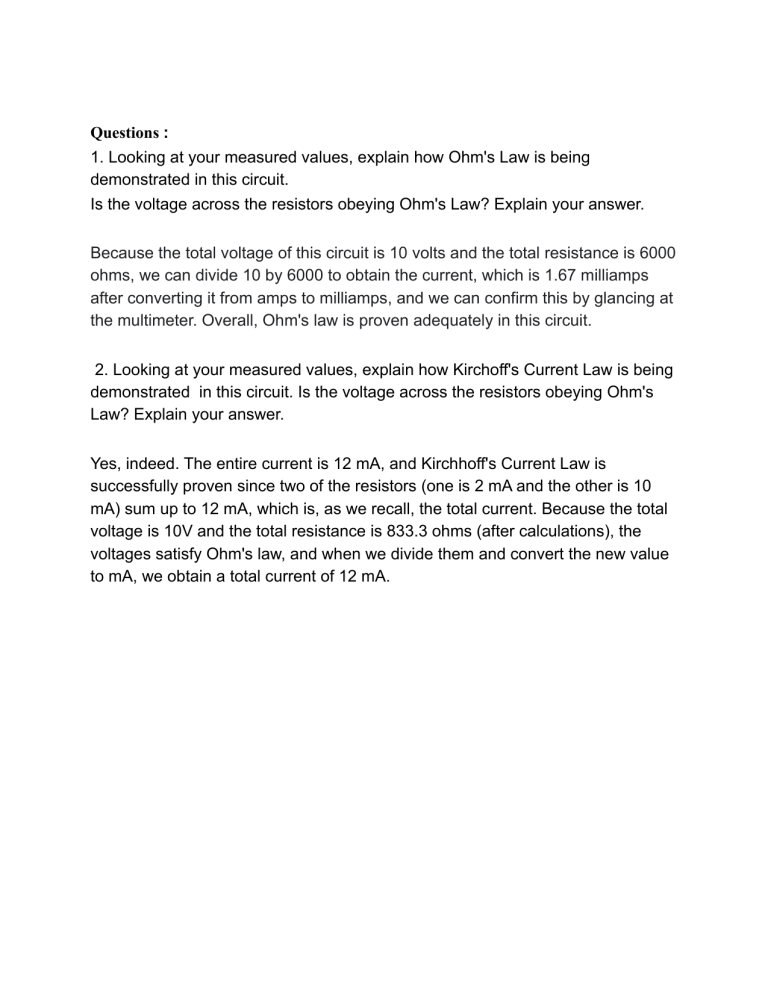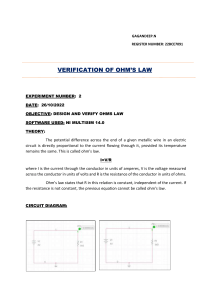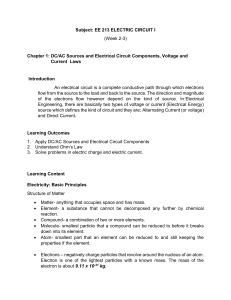Ohm's Law & Kirchhoff's Law Lab Report
advertisement

Questions : 1. Looking at your measured values, explain how Ohm's Law is being demonstrated in this circuit. Is the voltage across the resistors obeying Ohm's Law? Explain your answer. Because the total voltage of this circuit is 10 volts and the total resistance is 6000 ohms, we can divide 10 by 6000 to obtain the current, which is 1.67 milliamps after converting it from amps to milliamps, and we can confirm this by glancing at the multimeter. Overall, Ohm's law is proven adequately in this circuit. 2. Looking at your measured values, explain how Kirchoff's Current Law is being demonstrated in this circuit. Is the voltage across the resistors obeying Ohm's Law? Explain your answer. Yes, indeed. The entire current is 12 mA, and Kirchhoff's Current Law is successfully proven since two of the resistors (one is 2 mA and the other is 10 mA) sum up to 12 mA, which is, as we recall, the total current. Because the total voltage is 10V and the total resistance is 833.3 ohms (after calculations), the voltages satisfy Ohm's law, and when we divide them and convert the new value to mA, we obtain a total current of 12 mA. Page 2 of 2







